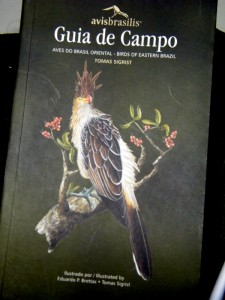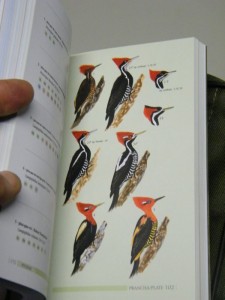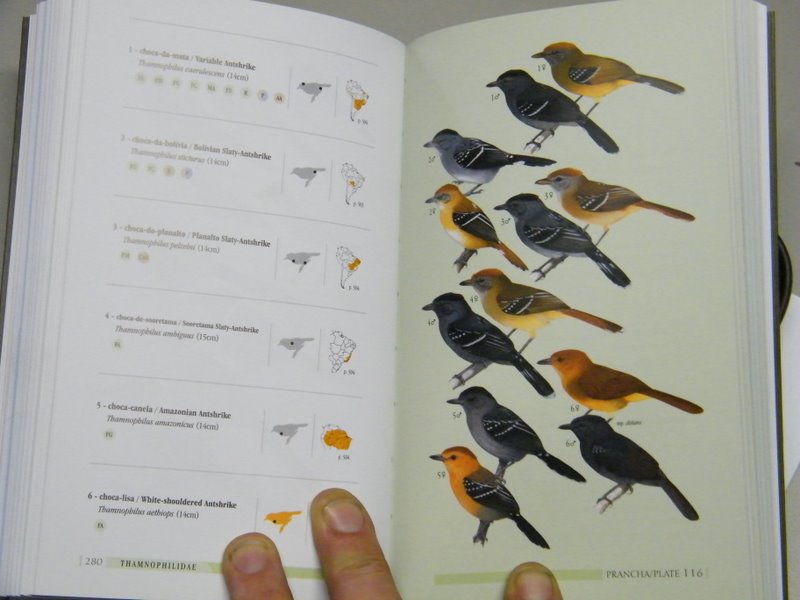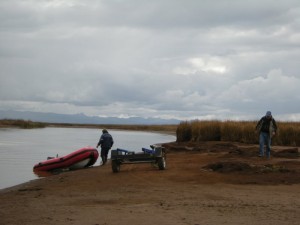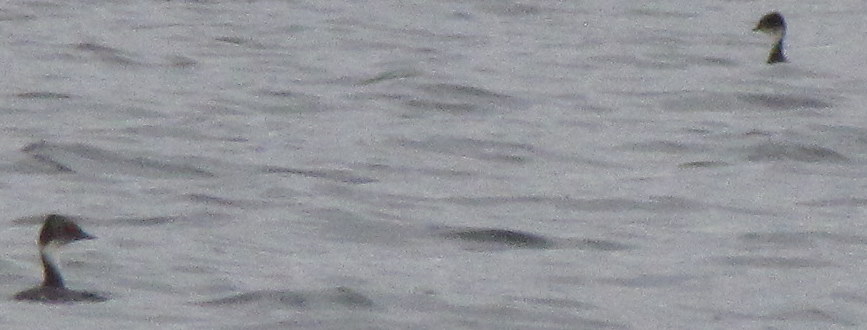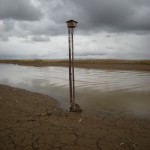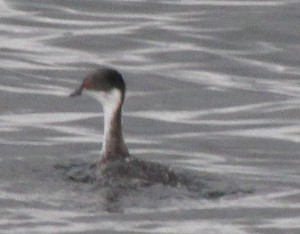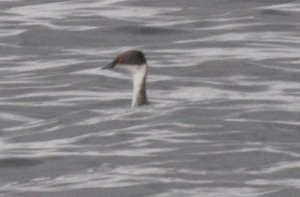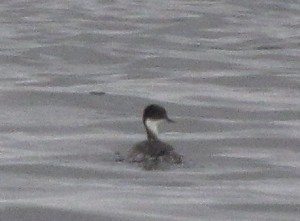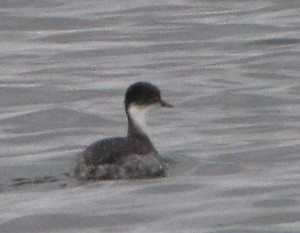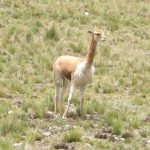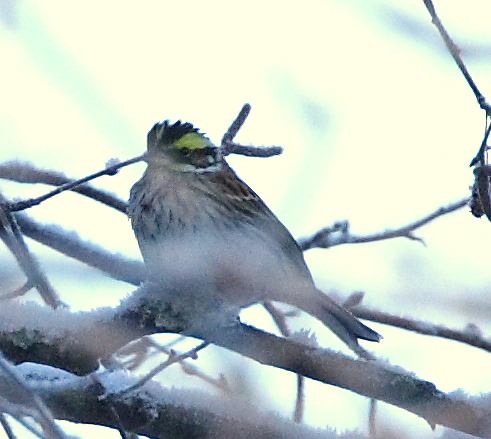South Florida Weekend. Visit from Peru by a (totally lost) Swedish birder
I spent a long weekend with my wife, Elita in southern Florida. I had to make some changes personally for my bank account in the US, and this was the principal cause of my trip. But business is always more fun if it can be combined with pleasure.
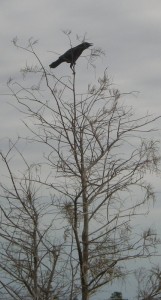
American Crow. Everglades. Photo Gunnar Engblom
The car rental (Enterprise) had me fooled a bit. I thought I had managed a super rate on the internet with a vehicle for just around 20$ per day. But the rental guy kept on insisting that I would be sorry if I did not get the “optional insurance of some 20$ per day” and then kept on adding insurance after insurance, so the price of the car would be something like 70$ per day. Hmm. Not at one instance did he mention that I have a quite good insurance with my Visa Gold. Unfortunately, this only struck me after I given in with an end cost of some 50 dollars per day with tax included. Anyway 150 bucks for the 3 days was not too bad.
Before the trip, I had hoped to get some more birding done, but the first day, the arrival day, lost 3 hours due to a delay in Lima. I had already promised Elita, that we should go shopping, so with visits at International Mall and Mall of the Americas and Toys R Us not too far from the airport, time just vaporized. After getting completely lost trying to find our hotel it was close to 11 pm before I finally fount Hotel El Palacio in Fort Lauderdale.
If you know Florida, and you are a birder, you know I was completely lost here. Why the heck did I choose Ft Lauderdale if I wanted to have a good birding position? The best place to stay is naturally Hampstead, from where you have a good vantage point to the majority of birding sites in Southern Florida. However, El Palacio in Ft Lauderdale came up very nicely prised in my hotel searches, and the fact that they had gym and did not charge for parking helped to make me decide. (In the end I did not use the gym of course, but at least it was there.)
Late night and there was no way I could take up offer to join birding at Everglades at 6 AM. I had my alarm clock at 4.45, but the bed was too comfortable and the drive too long. Instead around 10 AM, I went for a long run in the vicinity of the hotel.
It turned out to be a very pleasant run, and I was even seeing some birds, most of which are extremely common for Florida birders, but if anyone is interested here is a link to my running blog, where the run is featured. There are actually a few ID features you birders can help me with. First there is a Canada Goose. The picture is very poor, but it seemed to me that the individual was very small, so I am suspecting it is a Cackling Goose, which I thought is rare in Florida. If anyone in Oakland Park, Ft Lauderdale want to check it out here are the GPS coordinates in the Royal Palm Park:
26°10’31.08″N
80° 9’55.46″W
UPDATE: Feb 23, 2009. Chuck Geanangel, Rex Rowan, Roy Peterson and Carlos Ross kindly pointed me that any Canada goose south of Gainsville is not countable as it would not be wild. Jeez, what do I expect in a park pond!
There was also a pair long-necked Grebes quite distantly. The seemed to be too slender to be Pied-billed Grebe which I also saw on the run. I did not bring my binoculars and the 3x optical zoom did not do the job. Would Horned Grebe be a good guess? Is that a good bird?
UPDATE: Feb 23, 2009. Roy Peterson says the grebe is most likely Horned Grebe.
Furthermore a pair distant ducks, with very pale backs. Again the camera could not make out what they are. I am suspecting Canvasback. Is that at all possible?
UPDATE: Feb 23, 2009. Carlos Ross suggests that the most likely candidate was Ring-necked Duck or Lesser Scaup. Canvasback would be very rare.
Everglades and sparrows.
On Sunday, after convincing my wife that we’d see some alligators if we’d go to Everglades, we took off late after lunch. I set the GPS for Flamingo and just followed directions on the map software on the Blackberry and wondered how I could survive without this gadget before. I did not realize how far it was!
I had before this trip decided that there were 3 species I wanted to see. And the best place to see all of them as I understood was in the Everglades.
My targets were Sparrows. Ever since I read Kenn Kaufman’s Kingbird Highway I was fascinated by the local populations of Sharp-tailed and Seaside Sparrows in Florida. I wanted to see as many of these as possible. Kenn relates that Dusky Seaside Sparrow is no more, and it was likely his site for Cape Sables Seaside Sparrow was gone as well.
Cape Sables is close to Flamingo and furthermore Roberto Torres kindly gave me directions for the Coastal Prairie Trail where both Saltmarsh Sharp-tailed and Nelson’s Sharp-tailed Sparrows can be seen. So Flamingo it was. Roberto gave me many other tips which I will have to try out some other time. However, the two hottest birds in Florida at that moment that Roberto mentioned, being chased by the local birders, had absolutely NO interest for me……..Tropical Kingbird and Neotropical Cormorant. WTF!
(Do I have to mention trash and bird in the same word for you to understand HOW COMMON these are here in Peru. Funny how all things are relative to time and space. Is this what Einstein meant?)
Entrance fee was 10 buck. There were several cars parked at a pond as we approached Flamingo – and there were other birders.
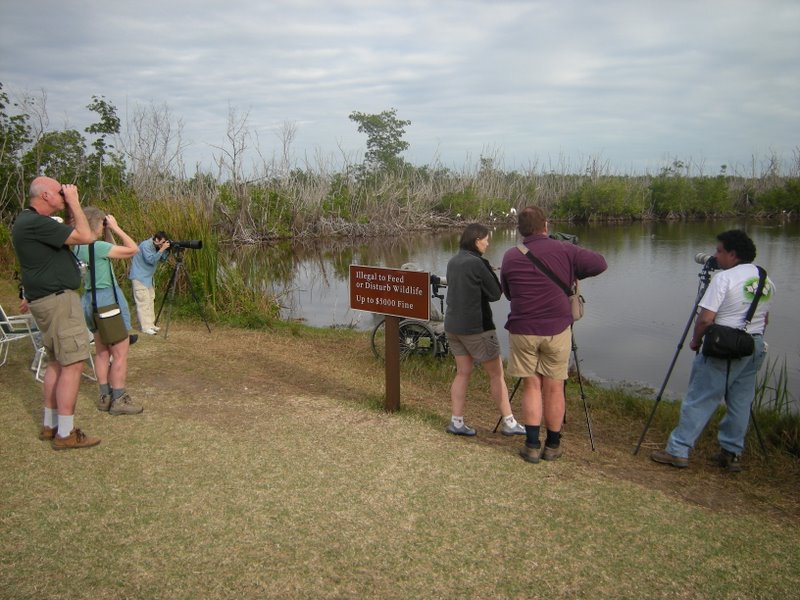
Birders in Florida, Everglades. Does anyone know the name of this pond?
Incredible variety of nice birds in front of my eyes – none new to me, but still cool birds to see. There were several species of ducks.
Green-winged Teal, Blue-winged Teal and Mallard, and also two female plumaged Northern Shovelers. Well, at least that is what the looked like to me, but not having seen one for about many years, and with no book at hand, I was only 99% sure. I was getting a bit shaky for a while, wondering that maybe I am committing a mistake here…maybe I am not recalling this right. Mallards have pretty broad bills, right – I thought for a few seconds and tried to get some pics through my binoculars.
Furthermore, there was Snowy, Little Blue, Tricolored and Green Heron and Great Egret. A few very pink Roseate Spoonbills and several Woodstorks in a tree and then all of a sudden a belted Kingfisher flew in.
On the lake there was also Pied-billed Grebe. I heard someone mentioning Least Grebe as well, but I never saw it.
Drove almost all the way to Flamingo, but the last open pond on the right a few birders had stopped and looked at something. Stopped car and walked up to them. They had a beautiful Osprey in view that had just caught a fish.
As we watched another raptor flew in. I am not being too familiar with North American raptors noticed it shaped as a Goshawk of Europe. A heavy bodied Accipiter. Streaked below on white and white tail with black bands. It was too large and heavy for a Sharp-shinned Hawk. I suggested Coopers Hawk to the other birders, as it would be next size up in the Accipiter genus. The other birders did not know.
Studying the literature afterwards I conclude it could have been an juvenile Coopers Hawk, but more likely on distribution it was a juvenile Red-shouldered Hawk. David Sibley says Red-shouldered Hawk is Accipiter-like, and that coopers Hawk has proportionally a very long tail. It did not appear as extremely long-tailed bird to me, but rather compact and bulky, but yet Accipiter-like. As the observation was short, I would not bet my life on it. I understand Cooper’s Hawk is quite rare in the region, so local birders may want to check if the bird is still there. I’d be interested to know.
UPDATE: Feb 23, 2009. Both Chuck Geanangel and Roy Peterson point out that Cooper’s Hawk is quite rare. I went through a bunch of pictures on the internet and Laura Graham also sent me a picture. I must conclude that my bird felt heavier than the Coopers pictures I am seeing and had a shorter tail. Thus, I am concluding young Red-shouldered Hawk. It was not so strange I did not know. It was my first one ever!
As we arrived to Flamingo only to be informed by a ranger that the Coastal Prairie Trail was closed for maintenance. Darn…
Instead the ranger said I could try the pond trail.
Nada!
Well, at least no Sparrows. Instead Eastern Pheobe, Northern Mockingbird, Northern Harrier, Anhinga and another Osprey.
My wife finally saw an Alligator as I had promised. A stone fell from my chest!
With some Canadian birders from Toronto we find aptly a Canada Warbler after some intense pishing at the end of the saltgrass.
UPDATE: Feb 23, 2009. Well that is what I thought. But again Chuck Geanangel as well as Brad Bergstom underline that Canada warbler would be a very lucky find. Chuck said I should get a lottery ticket (LOL!). My description was of a warbler without wingbars, gray on the back (grayish) and all yellow below with streaks on the chestsides (which I extrapolated in my mind to cross the chest ….even that I only saw the bird sideways) It also had an eye-ring. The eyering was broad and quite loose in shape. This only lead me to Canada Warbler. I was considering immature Yellow Warbler when I was questioned, but that is also a rare bird. Chuck came up with Praire Warbler. Not too bad. It fits perfectly to an immature female. My brain was playing with me, wanting me to put this bird into something I knew. Scrutinizing what I really saw I cannot say for certain I saw streaking across the chest and the gray back was not plumbeous gray as a Canada Warbler, but rather an olive gray that most likely appeared grayer than it was in the very late afternoon with poor light. I don’t complain as Praire Warbler was a lifer! That eyering was perfect!
Also a red-bellied Woodpecker flew over. They inform me that some birders had seen Sparrows on the Coastal Praire Trail in the morning and that the trail could be reached walking from the parking lot. But I was running out of time. On the way back to the parking lot I talk to a birder from Massachussets. Together we see a Red-tailed Hawk and an adult Red-shouldered Hawk with splendid orange underparts and a Blue-Gray Gnatcatcher.
I decided to approach the salt marsh habitat near the camp-ground. And yes, finally there were some sparrows there. Problem was that they pressed to the ground and only made short flights when flushed. They were making thin high pitched single note calls. I could not get them into view. Intense pishing, but that did not help and I was running out of light. Oh well, I have to come back and do this properly sometime. As I was walking back to the car, some sparrows were by the side of the road at the edge of the saltgrass vegetation. Finally, I saw it well. Supercillum, whitish or maybe yellow crownstripe (definitely saw yellow somewhere- could have been the lores), white malar, distinct heavily streaked underparts and flanks and a darker black spot on the central chest – Savannah Sparrow. Not quite the thing I was looking for, but at least I would not have to leave in uncertainty.
Birds seen:
Pied-billed Grebe
Anhinga
Great Egret
Snowy Egret
Little Blue Heron
Cartle Egret
White Ibis
Roseate Spoonbill
Woodstork
Mallard
Northern Shoveler 2 fem
Blue-winged Teal
Green-winged Teal
American Kestrel
Red-shouldered Hawk
Red-tailed Hawk
Northern Harrier
Killdeer
Ring-billed Gull
Belted Kingfisher
Red-bellied Woodpecker
Eastern Phoebe
Blue-Gray Gnatcatcher
Northern Mockingbird
Praire Warbler
Catbird
Savanna Sparrow
American Crow
Thanks to all that have helped me and answered questions prior and after the trip. Additionally, to the people mentioned in the article, I had help from Renne Leatto who gave me sites for Bobcat (next time!) and Barbara Passmore who signed me up on Floridabirds. Also thanks to Michelle Matson, who also gave some bobcat tips on Facebook.



